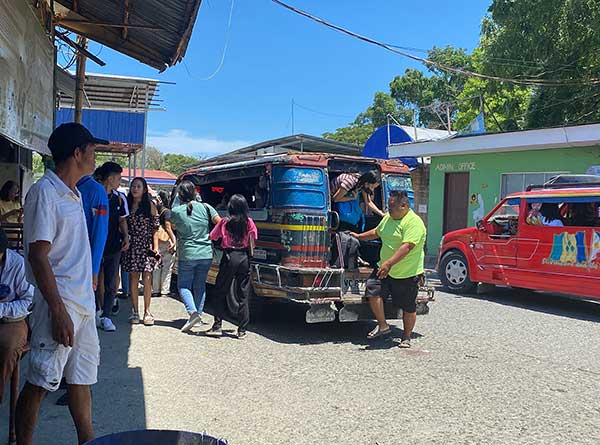
By Rjay Zuriaga Castor
After a lengthy discussion on Monday, June 3, the transport sector in Iloilo has agreed to allow 40 percent of traditional jeepney units from border towns to enter the city loop during peak hours.
Under this arrangement, 40 percent of first-town jeepneys will operate along their regular routes from 6:00 a.m. to 9:00 a.m. and 4:30 p.m. to 6:30 p.m., reducing to 25 percent during off-peak hours.
The decision followed a request from transport cooperatives of the first town, including drivers and operators from Santa Barbara, and intervention by Iloilo Governor Arthur Defensor Jr.
“We will implement it, provisionally working with Iloilo City, and the transport groups have to follow the rules set by the ICTMU to ensure that our entry won’t affect the transport groups that have regular routes in the city,” Defensor told the Daily Guardian.
“The first towns are like an extension of Iloilo City since most of the workforce are residents of the first towns of the province,” he added.
The Iloilo City Traffic Management Unit (ICTMU) had previously approved a 40 percent entry, with 25 percent during peak hours and a 15 percent buffer if passenger traffic increased.
Several passengers have complained about longer waiting times in terminals and stopovers since Iloilo City implemented its enhanced local public transport route plan (LPTRP) on May 27.
Jeepney drivers and operators of the first town mounted a “transport holiday” to highlight their plight, especially regarding minimal income from their operations.
To address the entry limitations for border town jeepneys, Defensor convened a meeting on Monday with the ICTMU, the Western Visayas Alliance of Transport Cooperatives and Corporations, the Land Transportation Franchising and Regulatory Board, and transport cooperatives from Iloilo’s border towns.
Defensor said he would personally follow up on the status of the province’s LPTRP at the Department of Transportation (DOTr) to ensure swift approval, noting that the province’s LPTRP had been returned for revisions four times already.
The transport sector of the city and province will also convene weekly to monitor developments in the new traffic plan.
“We will observe this, and if the effect is unlikely, we will adjust again,” Defensor said.
With the agreement reached, ICTMU Chief Uldarico Garbanzos reminded first-town jeepneys to adhere to the requisites, including following the dispatching plan, adhering to limited stops, and discontinuing the planned transport holiday.
Under the dispatching plan, Garbanzos stressed that first-town jeepneys should begin their routes from the point of origin and not from the perimeter boundary terminals.
“If this will be followed, I think we will have a very smooth working 40 percent structure implemented,” he said.
He also urged transport cooperatives of the first town to lead in monitoring the operators and drivers under their jurisdiction.
Transport groups and cooperatives in the first town assured they would comply with the city’s guidelines following the approval of their request. They also committed to discontinuing the two-day transport holiday that began on Monday.
Garbanzos explained that the initial 25 percent and 15 percent buffer measure ensures traffic flow in the city is controlled and protects the interest of the city’s transport cooperatives, considering that the first town’s entry creates a competitive scenario.
City Councilor Sedfrey Cabaluna clarified that the city government did not impose restrictions on the entry of first-town jeepneys. He underscored that the DOTr’s approval of the LPTRP dictates that first-town jeepneys are exclusively permitted within terminal boundaries.
“We did not limit it to 40 percent or 25 percent because it is supposed to be zero as mandated by the DOTr, but we considered everything […] because that is what the data shows during peak hours,” he said.
Before the full implementation of the LPTRP, the jeepneys followed the perimeter boundary ordinance of the city government, which allowed the first towns to enter the city with a 25 percent and 50 percent ceiling.
“There is no such thing as 100 percent even before […] There is not much difference even with the 40 percent measure we are following now,” Cabaluna said.
The 25 and 15 percent allocation was initiated by the city government following Defensor’s request on May 8. The request sought to allow at least 40 percent of the total consolidated jeepney units from the first towns to operate in Iloilo City using their existing route structure.
















